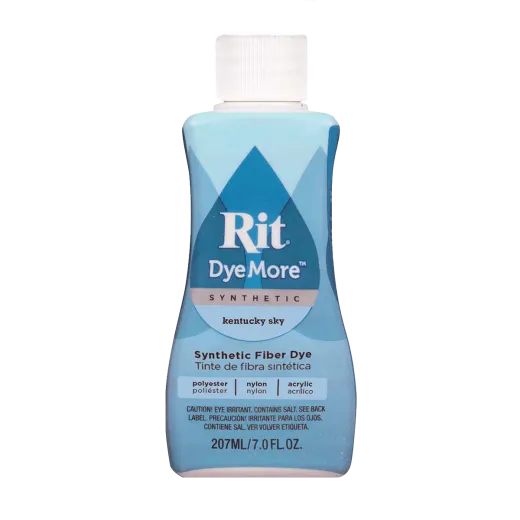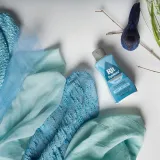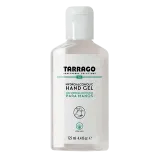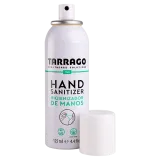RIT DYEMORE Liquid Dye for Synthetics 7oz KENTUCKY SKY / BŁĘKITNY uniwersalny barwnik w płynie do tkanin syntetycznych i mieszanek
Błękitny barwnik w płynie do tkanin syntetycznych




- Cena: €11.45 / szt.
-
-
szt.
-
Your shipment will be processed today if you place your order within:
If you place your order at this time, we will ship the products:
tomorow tomorow23232322222121202019191818171716161515141413131212111110109988776655443322110023232355544332211005559998877665544332211009995554433221100555999887766554433221100999h min sec
- Watch the product:
- Code: RIT-SYN_KENSKY
- Manufacturer: Rit Dye
-
Availability:
 Stan magazynowy - Średnio
Stan magazynowy - Średnio
You can get it for free
 TARRAGO HEALTHCARE Hydroalcoholic Hand Gel 70% Alk. 125ml - GRATIS
TARRAGO HEALTHCARE Hydroalcoholic Hand Gel 70% Alk. 125ml - GRATIS
 TARRAGO HEALTHCARE Hand Sanitizer 78% Alk. 125ml - GRATIS
TARRAGO HEALTHCARE Hand Sanitizer 78% Alk. 125ml - GRATIS
30 dni na zwrot
profesjonalne doradztwo - 100% zadowolonych klientów
Rekomendowane materiały:
Podstawowe właściwości produktu:
Produkt najczęściej stosowany do:
RIT DYEMORE Liquid Dye for Synthetics 7oz KENTUCKY SKY / BŁĘKITNY uniwersalny barwnik w płynie do tkanin syntetycznych i mieszanek - sklep Customizacja
Amerykański BLĘKITNY barwnik w płynie do tkanin syntetycznych, mieszkanek i tworzyw sztucznych. Błękit na lata. Ten czarodziej czuje się jak Derby, elegancki tłum i soczysty gin w bezchmurne popołudnie.
Barwnik do tkanin syntetycznych i tworzyw sztucznych
RIT DYEMORE Liquid to wspaniały barwnik do włókien syntetycznych, którym zafarbujesz niemal wszystko, co w swoim składzie zawiera 35% lub więcej poliestru, akrylu, octanu lub nylonu. Wszechstronny, łatwy w użyciu i nietoksyczny barwnik w płynie, który pomoże Ci zmienić kolor Twoich ubrań, butów, dodatków i akcesoriów. Idealne rozwiązanie do customu, rękodzieła, zdobnictwa, dekoracji, wykończenia wnętrz, a także do renowacji oraz regeneracji odzieży i innych przedmiotów. Wyblakłe ubrania z materiałów syntetycznych od teraz nie będą wielkim problemem, bo szybko je odnowisz. A jeżeli zechcesz stworzyć coś wyjątkowego, ten sam barwnik da Ci wiele opcji. RIT wspiera farbowanie odzieży od ponad 100 lat. Przy pomocy tych wspaniałych barwników rodem z USA możesz używać różnych technik i osiągać unikalne efekty oraz wzory, np. ombre, dip dyed, czy shibori. Barwniki RIT DYEMORE Liquid umożliwią Ci farbowanie niemal każdego przedmiotu wykonanego z materiałów syntetycznych i tworzyw sztucznych. Możesz barwić nawet przedmioty drukowane w 3D, kije lacrosse, peruki, sztuczne futra i wiele innych rzeczy, z którymi zwykłe barwniki sobie nie poradzą. Niezależnie od tego, czy farbujesz ubranie na kolor, który kochasz (ale nie był dostępny na półce), czy tworzysz wyjątkowy kostium lub przygotowujesz dekoracje na imprezę - wszystko, czego potrzebujesz to RIT i garnek ze stali nierdzewnej. Teraz już możesz wszystko! Ze względu na specyfikę farbowania syntetyków, barwnika RIT DYEMORE Liquid powinieneś używać przy pomocy garnka i metody blatu kuchennego. W tym procesie kluczowe jest utrzymanie wysokiej temperatury wody przez cały czas barwienia. Dlatego też barwnika RIT DYEMORE nie stosuj w pralce!
Barwniki RIT DYEMORE Liquid idealnie nadają się do farbowania: poliestru, akrylu, octanu, nylonu, spandexu, niektórych tworzyw sztucznych oraz mieszanek tkanin zawierających więcej niż 35% włókien syntetycznych.
Zawartość opakowania: 7oz / 207ml
Inne rodzaje barwników RIT
W przypadku farbowania ubrań zawierających w swoim składzie mniej niż 35% tkanin syntetycznych stosuj RIT DYE All-Purpose Liquid lub jego odpowiednik w proszku RIT DYE All-Purpose Powder. To 2 różne wersje tego samego doskonałego pigmentu. W przypadku płynu zyskujesz możliwość łatwiejszego dozowania i mieszania kolorów. Oba nadają się do farbowania: jeansu, bawełny, wełny, jedwabiu, sztucznego jedwabiu, lnu, wiskozy, nylonu, tiulu, drewna, papieru, korka i wielu innych materiałów oraz powierzchni.
WAŻNE!
Przed właściwym zastosowaniem każdego środka do skór, tkanin oraz innych materiałów przeprowadź próbę weryfikującą na niewidocznym skrawku, sprawdzając działanie produktu na kolor i strukturę powierzchni. Jeżeli efekt spełnia oczekiwania, możesz przystąpić do dalszych czynności.
- What will Rit dye?
- What will Rit not dye?
- Can I dye a black garment to white?
- How can I test the color of the dye?
- How do I get an even color?
- How long should I leave my item or fabric in the dyebath?
- Should fabrics or garments be washed before dyeing?
- What temperature should the water be for the dyebath?
- When overdyeing another color with black, why do I have to add an additional color?
- What special dyeing techniques should be used to achieve rich, dark color, such as black or navy?
- How do I determine how much dye I need?
- Can I dye a “Cold Water Wash” or “Dry Clean Only” fabric?
- Will the use of Rit weaken fabric?
- Will Rit dye the thread or stitching on my clothing?
- What are Rit's dyes made of?
- Can I use Rit to dye animal toys?
- Are Rit products safe for sewer or septic systems?
- Is Rit tested on animals?
- How do I get dye off my hands or skin?
- What is Rit's shelf life?
Ask a question about the product. Our team will be happy to provide a detailed answer to your inquiry.







